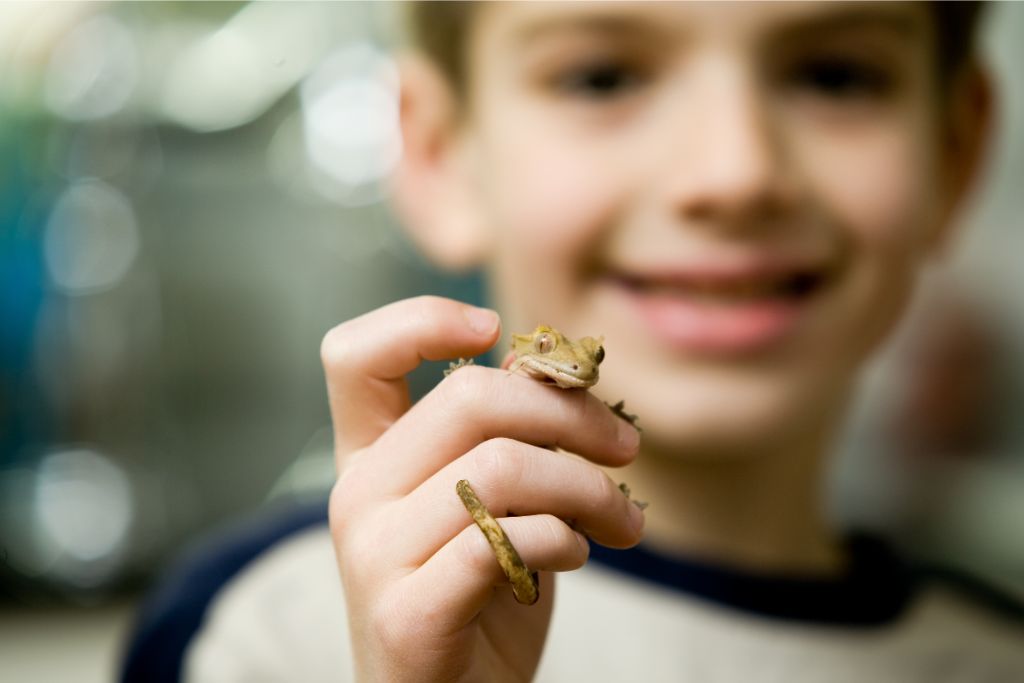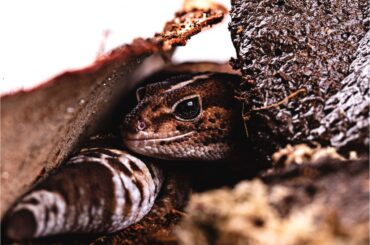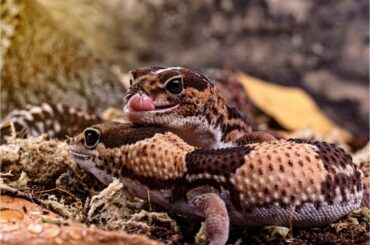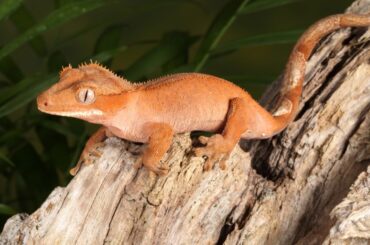Do you want to own a unique and easy-to-care reptile pet and wonder what it’s like to have one? Are you seeking a reptile friend that doesn’t need a massive tank setup?
Crested geckos are also known as eyelash geckos due to their distinctive features. They stand out, given their velvety bodies covered in tiny, hair-like structures and fringed crests from the eyes to the tail.
With their bright colors and expressive eyes, crested geckos have become popular, as their unique looks set them apart from other reptiles.
This article aims to provide a comprehensive crested gecko care guide and crested gecko care tips. It is a perfect resource for beginner reptile owners and even experienced ones.
Understanding Crested Geckos
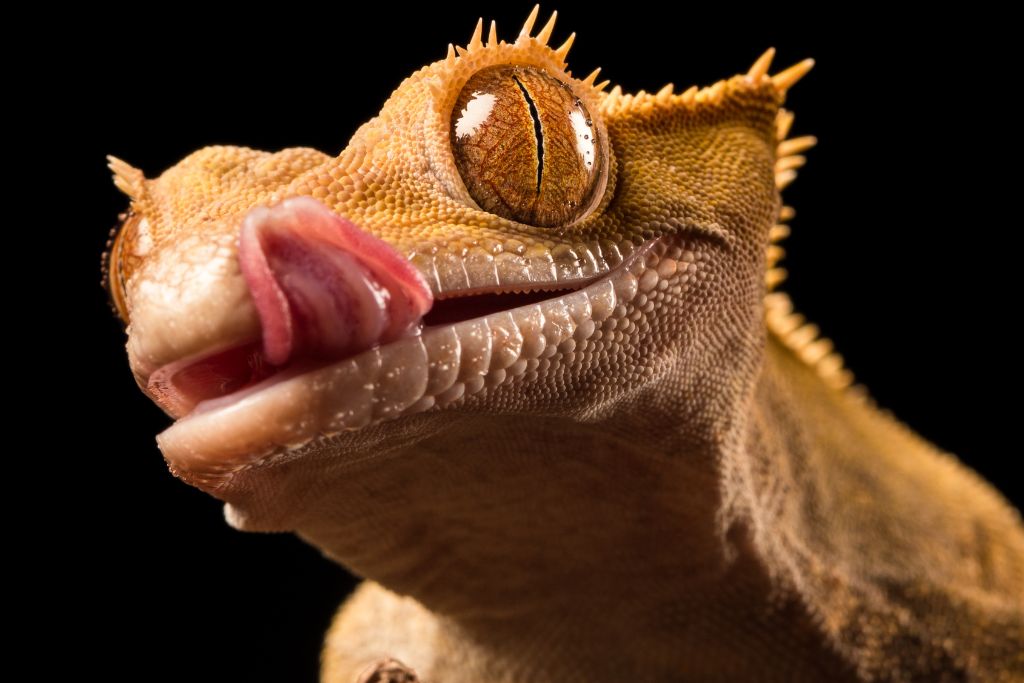
Crested geckos are scientifically known as Correlophus coliatus and live in New Caledonia. These reptiles can be found primarily in rainforests with lush and humid environments. They can also be seen in dense foliage, where they look for potential food, such as insects.
About their physical characteristics, crested geckos are known to have a row of soft, fringed crests that run from their head to the tail. Their crests serve the functions of communication and camouflage. These reptiles are typically small to medium, with a body length of 7 to 9 inches.
In addition, crested geckos have large eyes with vertical pupils but without lids. They are known as nocturnals and can shed their tail when threatened. Crested geckos change their vibrant coloration depending on their mood and environmental conditions.
How To Care For A Crested Gecko
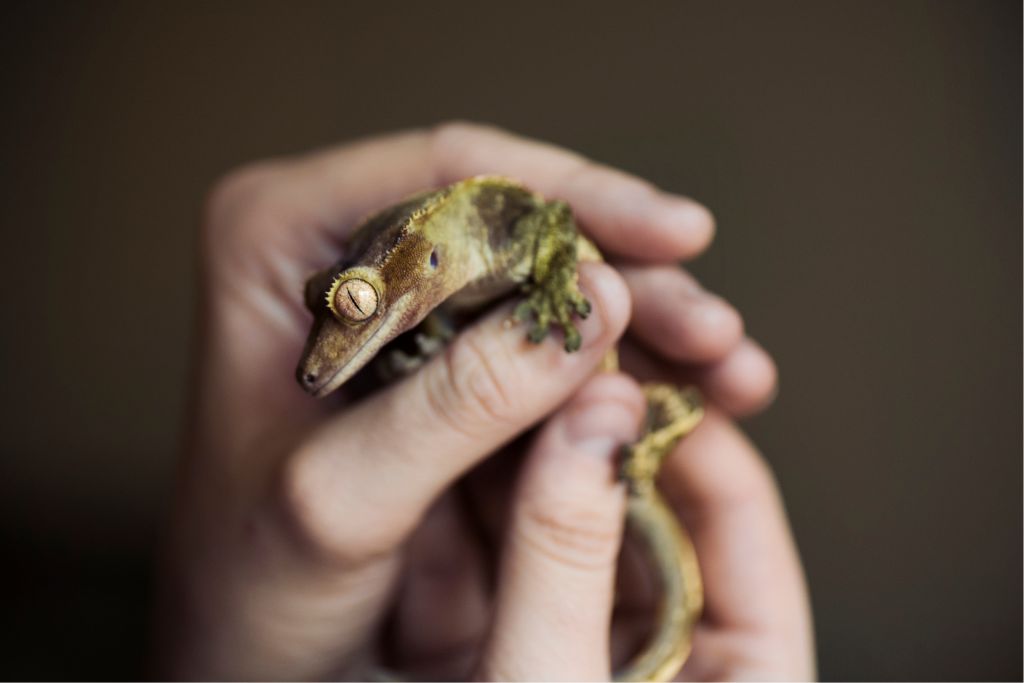
Crested geckos are widespread and one of the most popular reptile pets among enthusiasts and collectors. Like any other pet, geckos thrive in captivity when properly cared for. Here’s a comprehensive guide on how to care for a crested gecko.
Choosing Your Crested Gecko
Choosing a healthy gecko from a reputable reptile breeder or store is crucial. This helps you maintain a good environment and will benefit you and your pets in the long run. Here are some tips for choosing your crested gecko:
- Research Breeder Background: Look for breeders and check if they have a good standing in the market. A reputable breeder has a high probability of producing healthy geckos.
- Check for Signs of Health: Important factors to check to know your geckos health are clear eyes, plump tails, and blemish-free skin.
- Ask Questions: Always ask the breeder or store personnel about the gecko’s history and solicit advice on properly caring for them.
Setting Up The Enclosure
Creating a tank that resembles a gecko’s natural environment is essential. This is one of the considerations you must note when creating their perfect habitat. Below is the step-by-step guide to setting up the enclosure:
- Select the Suitable Enclosure: You can choose between a glass or screen terrarium for your geckos. Ensure you have a tank that provides enough ventilation for your pets.
- Add Substrate: Use coconut fiber or cypress mulch substrate to fill in the bottom of the terrarium.
- Provide Climbing Accessories: Caring for a crested gecko involves knowing what they love. With this, you can include branches and fake plants inside their habitat, as they enjoy climbing and exploring.
Daily Care Routine
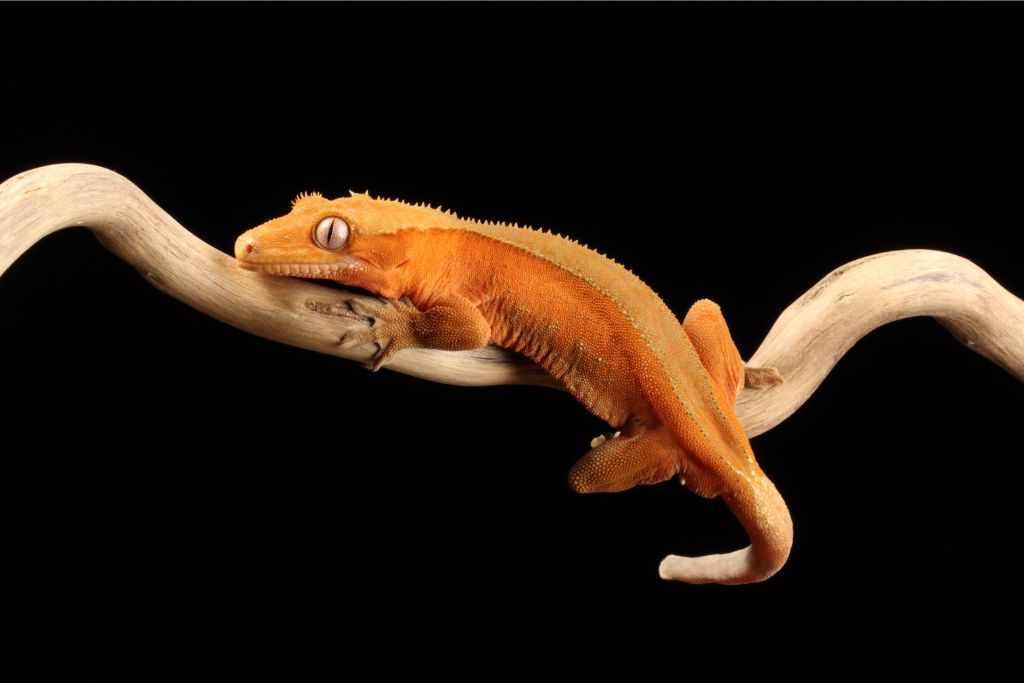
Being consistent in providing care for your geckos is the key to making them happy and healthy. Here are some daily care routines you can follow:
- Check Temperature and Humidity: A temperature of 72-78°F (22-26°C) and 50-70% humidity must be maintained inside the terrarium to help aid in metabolism.
- Offer Fresh Water: Practice changing the water daily in the gecko’s shallow dish.
- Inspect for Health Issues: Always check your geckos for any signs of illness or changes in eating habits. Immediately address the concern if you observe any potential health issues.
Health And Wellness
To ensure the well-being of your geckos, you need to watch their health regularly. Here’s the proper way of how you can maintain a gecko’s overall health and wellness:
- Schedule Regular Check-Ups: Schedule annual check-ups with a reptile veterinarian. Request a crested gecko care sheet and use that as a guide for ensuring you give the best care for your reptile friends.
- Maintain a Clean Enclosure: Avoid bacteria build-up inside the terrarium by keeping your gecko’s habitat clean.
- Balanced Diet: Offer crested gecko food and include some insects for extra proteins to your crested gecko diet.
Recommendations For Cage Accessories
Providing crested gecko care involves ensuring their comfort and well-being. You must consider adding cage accessories to achieve gecko’s happiness and contentment in captivity. Here are some recommendations for cage accessories you can add inside gecko’s terrarium:
- Cozy Hides: Provide your pet with various hides or hideaway options for privacy and rest purposes. You may choose from wooden shelters, plastic caves, or comfortable fabric hideouts to secure your geckos.
- Climbing Structures: Add branches, ropes, and platforms as climbing accessories inside the terrarium. Depending on their class, geckos use these structures for exercise, stimulating their mental needs.
- Chew Toys: Safe chew toys benefit gecko’s dental hygiene and happiness. Look for toys made from pet-friendly materials like wood, plastics, and natural fibers.
- Interactive Toys: Puzzle feeders, treat dispensers, and balls with treats are interactive toys you can add to the gecko’s habitat. Having these toys handy can help your geckos fight boredom.
- Bedding and Nesting Materials: Select suitable bedding materials, such as shredded paper and hay. You can also add shredded newspaper or gentle fabric for more comfort.
- Water and Food Dispensers: Investing in high-quality water and food containers is the key to a constant fresh produce supply. Some convenient options are gravity-fed water bottles and cage dishes attached to the cage.
- Environmental Enrichment: Include items like mirrors, toys, or tunnels in your gecko’s terrarium to allow them to explore and play.
- Thermometers and Hygrometers: Maintain the right temperature and humidity inside your gecko’s cage. Ensure to check regularly its accurate level using thermometers and hygrometers.
- Cage Liners: Save time from cleaning by adding cage liners or mats to your gecko’s enclosure.
- Safety Accessories: Safety should be your top priority when caring for a crested gecko. Install secure locks on the cage doors and remove any potential hazard near your pets.
Temperature And Lighting
The ideal gecko cage temperature should range from 72 to 78°F (22°C to 26°C). It is essential to maintain this temperature level as conditions change during nighttime.
Crested geckos also benefit from UVB lighting and enough exposure. This is true since UVB light helps them absorb vitamin D3, a good calcium source for overall bone health.
Diet And Feeding
Geckos usually consume insects like crickets, flies, and moths in the wild. As part of their usual diet are also sweet fruits, nectars, and tree sap. They usually have various options for food in the wild and traditionally base their diet on seasonal availability.
In captivity, a balanced diet that mimics their natural food sources is crucial. It would help if you considered offering a combination of live insects and some fruit purees to the commercial gecko feeds. Commercial food supplemented with small insects will give your gecko the calcium and vitamins they need.
Handling And Socialization
One essential crested gecko care for beginners is to apply proper handling techniques. Geckos are delicate creatures, and mishandling them may cause them to feel and may trigger tail drop. It is also vital to approach your gecko slowly and avoid any sudden movements not to startle them.
Regarding socialization, allow your geckos to settle first and explore their new habitat at their own pace. Give your geckos time to adjust by limiting disturbances for the initial days after relocation.
Conclusion
Caring for a crested gecko involves significant responsibility and commitment from the gecko’s owners. Habitat setup, balanced diet, and environmental conditions are the things you have to consider to provide them comfort.
Following the best practices in this article could enable you to become an excellent reptile pet owner. Not only that, taking good care of these reptiles will also help preserve their species in captivity.
FAQs
Are Crested Geckos Easy To Take Care Of?
Crested geckos are generally considered low-maintenance creatures and are easy to take care of as pets. Yet, they still need proper care by providing the right enclosure, temperature, humidity, and nutrition.
Do Crested Geckos Need Heat Or Light?
Crested geckos do not need external heat sources and go well at room temperature, around 72 to 78°F (22°C to 23°C). But they still need a consistent light-dark cycle achieved through ambient room lighting.
Do Crested Geckos Need Sunlight?
These reptile pets do not need direct sunlight. Their terrarium should not be exposed to direct sunlight as this may cause overheating of the whole enclosure.

